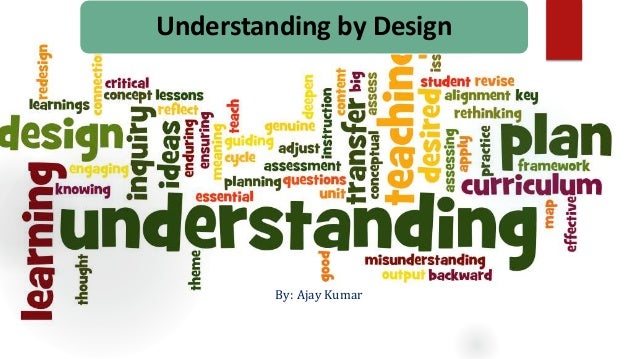The Understanding by Design Guide to Creating High-Quality Units offers instructional modules on the basic concepts and elements of Understanding by Design (UbD), the “backward design” approach used by thousands of educators to create curriculum units and assessments that focus on developing students’ understanding of important ideas. Introduce and discuss the 3 stages of Understanding by Design (also known as Backward Design because you begin with the end in mind) Practice creating Enduring.– PowerPoint PPT presentation Introduce and discuss the 3 stages of Understanding by Design (also known as Backward Design because you. Understanding by Design (UbD) is a framework and process to help you plan curriculum, instruction, and assessment. It focuses on teaching for understanding and transfer, while designing curriculum.
Understanding by Design® (UbD™) is a framework for improving student achievement. Emphasizing the teacher's critical role as a designer of student learning, UbD™ works within the standards-driven curriculum to help teachers clarify learning goals, devise revealing assessments of student understanding, and craft effective and engaging learning activities.

Developed by nationally recognized educators Grant Wiggins and Jay McTighe, and published by the Association for Supervision and Curriculum Development (ASCD), Understanding by Design® is based on the following key ideas:
Understanding By Design Pdf
- A primary goal of education should be the development and deepening of student understanding.
- Students reveal their understanding most effectively when they are provided with complex, authentic opportunities to explain, interpret, apply, shift perspective, empathize, and self-assess. When applied to complex tasks, these 'six facets' provide a conceptual lens through which teachers can better assess student understanding.
- Effective curriculum development reflects a three-stage design process called 'backward design' that delays the planning of classroom activities until goals have been clarified and assessments designed. This process helps to avoid the twin problems of 'textbook coverage' and 'activity-oriented' teaching, in which no clear priorities and purposes are apparent.
- Student and school performance gains are achieved through regular reviews of results (achievement data and student work) followed by targeted adjustments to curriculum and instruction. Teachers become most effective when they seek feedback from students and their peers and use that feedback to adjust approaches to design and teaching.
- Teachers, schools, and districts benefit by 'working smarter' through the collaborative design, sharing, and peer review of units of study.

In practice, Understanding by Design® offers:


- a three-stage 'backward planning' curriculum design process anchored by a unit design template
- a set of design standards with attendant rubrics
- and a comprehensive training package to help teachers design, edit, critique, peer- review, share, and improve their lessons and assessments.
Support materials include the original Understanding by Design® book (Wiggins & McTighe, 1998), which provides an in-depth look at the Understanding by Design® framework, as well as a handbook, a study guide, and a three-part videotape series.
Understanding by Design® Framework - Videos, Articles ...
These materials provide educators with a powerful set of resources to make their work more focused, engaging, coherent, and effective.
The potential of UbD™ for curricular improvement has struck a chord in American education. Over 250,000 educators own the book. Over 30,000 Handbooks are in use. More than 150 University education classes use the book as a text. Over twenty thousand educators have access to the UbD™ Exchange through individual, school, district or regional memberships. Both the book and the Handbook won separate back-to-back annual awards for adult education from EdPress, the education publishing trade association. The state of Virginia adopted core elements of our UbD™ Design Template in developing a teaching guide for its state Standards of Learning, the International Baccalaureate program uses a modified form of the UbD™ Template in its Primary Years Program, and the states of New York and Texas wrote their curriculum guide to Social Studies using UbD™ ideas and terms.

